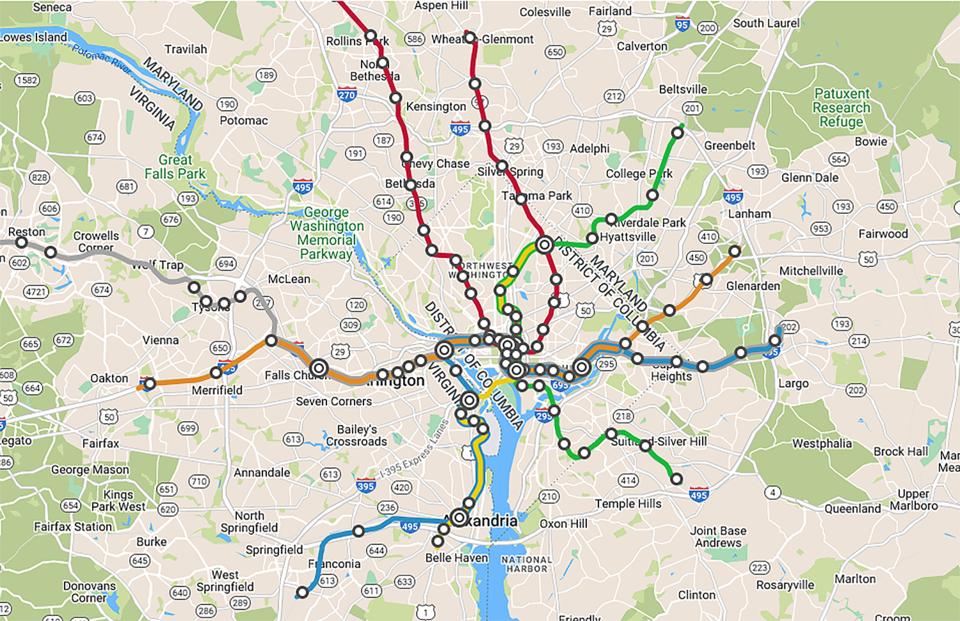The Washington Metropolitan Area Transit Authority (WMATA) is taking “steps in the right direction” with its proposed fiscal 2024 budget, five-year capital-improvement plan and changes to some fees and services, Fairfax County supervisors said Feb. 21.
But supervisors also approved a three-page letter from Chairman Jeff McKay (D) to Randy Clarke, WMATA’s general manager and chief executive officer, regarding concerns over Metrorail frequency and fares, bus subsidies, system repairs and future budget outlook.
WMATA’s proposed $2.32 billion fiscal 2024 operating budget would be subsidized with $1.25 billion from jurisdictions served by the system.
The budget would close a funding gap by using WMATA’s remaining $561 million in federal American Rescue Plan Act moneys, plus $11.4 million in increased passenger revenues, $17.1 million in non-passenger revenues, $10 million in reduced expenses and $146.2 million in federal Infrastructure Investment and Jobs Act funds.
But WMATA is predicting a $730 million funding shortfall in fiscal 2025, with worsening gaps in subsequent years, Fairfax County officials said.
“We remain deeply concerned about FY2025 and future WMATA budgets,” McKay said in his letter. “The current financial path is clearly unsustainable.”
WMATA’s board should collaborate more closely with jurisdictional partners to address the challenge, the letter read. The agency also could bolster fare revenues by communicating with large companies in the region on when they plan to encourage employees to return to the workplace – and then promoting transit options for workers and customers, it stated.
“I have a feeling when this comes around next year there’s going to be a little more discussion about the [WMATA] budget,” said Supervisor Walter Alcorn (D-Hunter Mill). “We’ve got some significant financial challenges on the horizon for the following years.”
Supervisors backed WMATA’s proposals to reduce the base Metrorail fare from $2.25 to $2, hold late-night and weekend fares steady at $2 and keep Metrobus fares at $2. They were not keen on plans to increase the maximum Metrorail fare from $6 to $6.50, saying this disproportionately would affect riders from Fairfax County and other outlying jurisdictions and might dissuade long-distance commuters from using Metrorail.
“We encourage WMATA to consider gradually phasing this increase over two years, at a minimum,” McKay’s letter read. “We were also disappointed that the proposed budget did not address parking fees at Metrorail stations. A nominal reduction in parking fees could encourage additional ridership, especially by those paying the maximum fare.”
The Board of Supervisors also supported WMATA’s plan to give 50-percent Metrorail and Metrobus discounts to recipients of the federal Supplemental Nutrition Assistance Program (SNAP), saying this would complement the Fairfax County’s pilot program for low-income Fairfax Connector bus riders.
Supervisors stood behind WMATA’s proposal to increase Metrorail train frequency from 10 minutes to six on the Green and Yellow lines and seven and a half minutes on the Orange Line, but hoped service on the Blue and Silver lines could be made more frequent than every 10 minutes during peak hours.
“The Silver Line was experiencing the most growth in ridership in the entire system prior to the pandemic,” according to McKay’s letter. “With the opening of Phase 2 and the connection to Dulles Airport, coupled with ongoing and planned developments, we believe that the Silver Line requires more frequent service.”
Ongoing and planned developments along the Blue Line, especially around the Franconia-Springfield Station – near where Virginia leaders the previous week had stumped to have the federal government relocate the FBI’s headquarters – also “should warrant improved headways,” the letter read.
WMATA would hold the Metrobus fare at $2, maintain 12-minute frequencies on 20 Metrobus lines and provide buses at 20-minute intervals on 16 other lines. Service would be improved on the 16M and 11Y lines in Virginia, B2 line in the District of Columbia and A12 line in Maryland.
The proposed 16M premium-service line, which would operate between Columbia Pike in Fairfax County and Crystal City in Arlington, will serve a significantly transit-dependent area and echoes the former Columbia Pike Streetcar initiative, McKay’s letter read. Fairfax County supervisors supported the streetcar proposal, but the Arlington County Board abandoned it in 2014.
Supervisors favored reinstitution of the 11Y Metrobus line, which now is called DC3 and runs between Mount Vernon and Washington, D.C. But McKay’s letter asserted that Fairfax County and other jurisdictional partners should not have to fork up more money in fiscal 2024 for 11Y service.
The 11Y line, along with some other Metrobus routes operating in Fairfax County, were shut down in March 2020 because of the pandemic, but the county still had to pay its entire jurisdictional subsidy.
The letter also criticized the timing and communications for WMATA’s upcoming repair efforts this summer, which county officials said had been planned for years but only relayed to the county just days before the public announcement.
“As a critical funding partner to WMATA, Fairfax County and other jurisdictional staff should be involved in the decision-making process related system shutdowns, particularly ones that impact our riders,” McKay’s letter stated. “At a minimum, the county should have been informed about these plans before they were finalized.”
WMATA should find ways to maintain Silver Line service to the greatest possible extent during that period, even if it results in a less-efficient construction project, the letter added.



